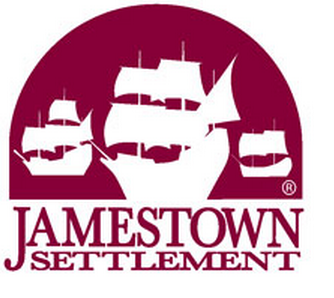Friday, April 7, Senior Archaeologist for Jamestown Rediscovery Dr. Charles Durfor ’74 and Jamestown Rediscovery Director of Archaeology Dave Givens discussed their research efforts at Historic Jamestowne as part of a chemistry department seminar.
The talk began with a short introduction from the chair of the chemistry department Dr. Robert Pike.
Pike then handed the discussion over to Givens, who opened the seminar with his personal research anecdotes. Givens’ first job was in Jamestown and he still works there today. According to Givens, throughout his career, he has always come back to the sense of curiosity that got him into archaeology in the first place.
“My first love is asking ‘why?’” Givens said. “And I think everyone on the team [at Jamestown Rediscovery] has that question. Why are we seeing these things? And they often are somewhat antithetical to the sort of things that we know about in our history education.”
Givens then walked the lecture attendees through a condensed history of the Jamestown settlement. He noted several important events in settlers’ progress, including drought, cultivation efforts and interactions with Native American tribes around Jamestown.
Givens then introduced Durfor to the audience. After receiving a degree in chemistry at the College, Durfor continued his study of chemistry with a Ph.D. in bioorganic chemistry at the University of Virginia. His studies led him to several research positions before he joined Jamestown Rediscovery in 2018. He credited the College for giving him the foundation for his career.
“For my work, I really needed a firm and solid chemistry background, and for that, I thank the past and current faculty of the chemistry department here who made it possible for me. Thank you,” Durfor said.
“For my work, I really needed a firm and solid chemistry background, and for that, I thank the past and current faculty of the chemistry department here who made it possible for me. Thank you,” Durfor said.
Durfor presented a more chemistry-oriented side of the Jamestown Rediscovery team’s archaeological work. He talked about how the team tracked Jamestown’s history through spectroscopy, the measurement of electromagnetic radiation from different decaying forms, or isotopes, of elements.
“We’re taking a very narrow slice because chemistry has many, many roles in archaeology. But in this particular instance, we’re focusing on one area, which is going to be elemental analysis using stable isotopes and elements in general, so we can tell the whole story too,” Durfor said.
The team drew conclusions about settlement and diet patterns by looking at differences in carbon, nitrogen, oxygen, strontium and lead forms decaying in found objects and remains.
Using trends from his own work and previous scientific precedent, Durfor explained how these decay patterns illustrated larger historical trends. For example, he presented a graph tracking carbon-13 levels in decaying bodies to explain how the introduction of maize cultivation led to a change in diet for people in the Jamestown area.
“When corn enters into the diet, and that’s about at 1080 [C.E.], all of a sudden the delta carbon-13 value goes much higher and that’s very valuable to us,” Durfor said. “As archaeologists, not only can we tell when foreign things get introduced, but when you come from England where you’re mostly eating wheat, to America, where you’re mostly eating corn, you’ve got a record of that [spike in people eating corn]. You can see that on the graphs.”
Durfor then walked the audience through more recent research efforts, such as dating Native American pottery shards from around Jamestown, and urged students to get involved.
“We would love to know, ‘Who are the Native Americans who interacted with the settlers at Jamestown?’ Unfortunately, our historical records are limited to the English records. Fortunately, the Native Americans who interacted with the early settlers left a record. That record is the Native American ceramics. So if we could identify … where [the pottery] was made, we will have a better sense of that social interaction and that trade that occurred in the early years,” Durfor said.
Givens then jumped back into the discussion and stressed the cultural and historical importance of Durfor’s recent archeological work.
“We’ve been trying to give agency in archaeology — it’s not about the English, it’s about the Virginia Indians — and that’s been our goal, probably for the last 10 or so years,” Givens said.
“We’ve been trying to give agency in archaeology — it’s not about the English, it’s about the Virginia Indians — and that’s been our goal, probably for the last 10 or so years,” Givens said.
Anna Mei Quadrato ’26 attended the seminar as part of her coursework for RELG 345: Religion, Colonialism and Nationalism in North America and found a new point of view in Givens’ and Durfor’s presentation.
“I think [my professor] just wanted us to get a different perspective on how historical and scientific researchers have sort of discovered how Europeans came over and started colonizing,” Quadrato said. “It was a lot more scientific than I thought it was going to be because I was expecting my teacher to give us something more on the historical side.”
By educating the public on research like this, Givens and his team hope to continue this pursuit of “why” and “how” for groups that previously have been overlooked in favor of studying the settlers’ stories.
“Part of the deal… is education. We do a deeper series and we’d love to do that as well with you guys so that [our work] gets out there. And we’re five minutes down the road. And that’s my main hope… is that, here we are all together and we can make a difference,” Givens said.

